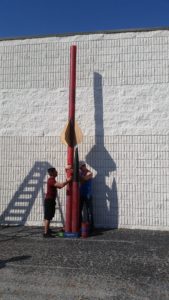
Last year, SOAR built the second (upper) stage of its first ever two-stage rocket, and sucessfully launched it at LDRS 36. Multi-stage rockets are virtually unheard of in the collegiate setting, so this is a huge accomplishment for us.
This rocket, known as Taurus I, will stand over 24′ (7.3 m) tall when finished this year and could potentially reach a height of 50,000′.
Due to the 14,000′ height limit of LDRS, SOAR is looking for alternative opportunities to launch the full rocket. Currently, tentative plans exist for using this rocket in the 2018 Spaceport America cup in New Mexico. This would allow us to reach 30,000′ and even potentially use SOAR’s in-house experimental solid fuel motors.
UPDATES
Launch Day!
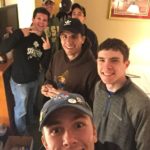 Both the NASA Student Launch and LDRS rockets are scheduled to launch tomorrow (Saturday, April 8th)! The NSL team will be launching their 13-ft tall, 47.5 lb Apis I with it’s vision recognition/camera aiming payload in Alabama; and the LDRS team will be launching the upper stage of Taurus I in Maryland. Check out the Current Projects tab for more information on our teams’ projects this year, and also be sure to watch the NSL live stream tomorrow to see all 40+ NSL launches in realtime. We will be launching at approximately 10:00 am CT.
Both the NASA Student Launch and LDRS rockets are scheduled to launch tomorrow (Saturday, April 8th)! The NSL team will be launching their 13-ft tall, 47.5 lb Apis I with it’s vision recognition/camera aiming payload in Alabama; and the LDRS team will be launching the upper stage of Taurus I in Maryland. Check out the Current Projects tab for more information on our teams’ projects this year, and also be sure to watch the NSL live stream tomorrow to see all 40+ NSL launches in realtime. We will be launching at approximately 10:00 am CT. This week at SOAR — getting ready for competition!
 This is an exciting week for SOAR! Both the Large Dangerous Rocket Ships (LDRS) and NASA Student Launch (NSL) teams are all hands on deck, working on last minute preparations for both events in just a couple of days! Many hundreds of hours have gone into both of these projects, so it’s amazing to finally see them come to fruition. The NSL team had their rocket (Apis I) painted as gift from Jim’s Body Shop in a beautiful bright green, white, and metallic gold (USF’s colors) scheme, while the computer science, mechanical engineering, and electrical engineering specialists worked on final
This is an exciting week for SOAR! Both the Large Dangerous Rocket Ships (LDRS) and NASA Student Launch (NSL) teams are all hands on deck, working on last minute preparations for both events in just a couple of days! Many hundreds of hours have gone into both of these projects, so it’s amazing to finally see them come to fruition. The NSL team had their rocket (Apis I) painted as gift from Jim’s Body Shop in a beautiful bright green, white, and metallic gold (USF’s colors) scheme, while the computer science, mechanical engineering, and electrical engineering specialists worked on final February Build Days
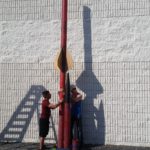 SOAR has held two build days so far in February, on the 4th and the 11th. During these workdays extensive progress was made in all of SOAR’s major projects, including NSL and LDRS. Don’t miss us at the USF Engineering EXPO tomorrow! NASA Student Launch The NSL computer science team continued to develop the code for both the steering and the vision systems in the landing module. The module can now turn towards a GPS destination and fly in that direction. Current remaining challenges include accounting for wind speed and optimizing the vision system code. The navigation code is located
SOAR has held two build days so far in February, on the 4th and the 11th. During these workdays extensive progress was made in all of SOAR’s major projects, including NSL and LDRS. Don’t miss us at the USF Engineering EXPO tomorrow! NASA Student Launch The NSL computer science team continued to develop the code for both the steering and the vision systems in the landing module. The module can now turn towards a GPS destination and fly in that direction. Current remaining challenges include accounting for wind speed and optimizing the vision system code. The navigation code is located 2nd January Build Day
 On Sunday, January 29th, SOAR held a general build day for all projects at our workshop space. Progress was made on all three of our main projects — NSL, LDRS, and FSGC. NASA Student Launch The NSL rocketry team worked on test-fitting components and tweaking rocket layout. They also began the process of epoxying the fillets for the fins, which will take a total of three build days. The computer science and electrical engineering teams worked on tweaking the code for the landing module, getting it to use rotors to face towards a specific compass heading and lock onto that
On Sunday, January 29th, SOAR held a general build day for all projects at our workshop space. Progress was made on all three of our main projects — NSL, LDRS, and FSGC. NASA Student Launch The NSL rocketry team worked on test-fitting components and tweaking rocket layout. They also began the process of epoxying the fillets for the fins, which will take a total of three build days. The computer science and electrical engineering teams worked on tweaking the code for the landing module, getting it to use rotors to face towards a specific compass heading and lock onto that General Body Meeting
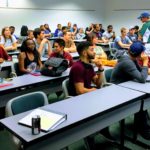 Our general body meeting last week, on January 5th, had a great turnout! SOAR members were updated on new policies, current project statuses (see the individual project pages for more info), and upcoming events. New project leaders were introduced and the beginning of the appointment process for next year’s main leadership positions was announced. Afterwards, the NSL computer science team went to the DFX Lab to work on the code for the landing module in preparation for the January 29th build day.
Our general body meeting last week, on January 5th, had a great turnout! SOAR members were updated on new policies, current project statuses (see the individual project pages for more info), and upcoming events. New project leaders were introduced and the beginning of the appointment process for next year’s main leadership positions was announced. Afterwards, the NSL computer science team went to the DFX Lab to work on the code for the landing module in preparation for the January 29th build day. LDRS Launch Day (With Videos)
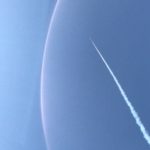 The Large Dangerous Rocket Ships team, who is working on a multi-stage rocket, recently took the stage at SOAR’s first launch day of 2017! This launch day, held on January 21st at Varn Ranch, was a huge success. The LDRS team was able to launch and collect data for the main stage of the rocket, as shown in the images and videos below. Next they will work on completing the booster stage for an even larger, higher-reaching rocket.
The Large Dangerous Rocket Ships team, who is working on a multi-stage rocket, recently took the stage at SOAR’s first launch day of 2017! This launch day, held on January 21st at Varn Ranch, was a huge success. The LDRS team was able to launch and collect data for the main stage of the rocket, as shown in the images and videos below. Next they will work on completing the booster stage for an even larger, higher-reaching rocket. 